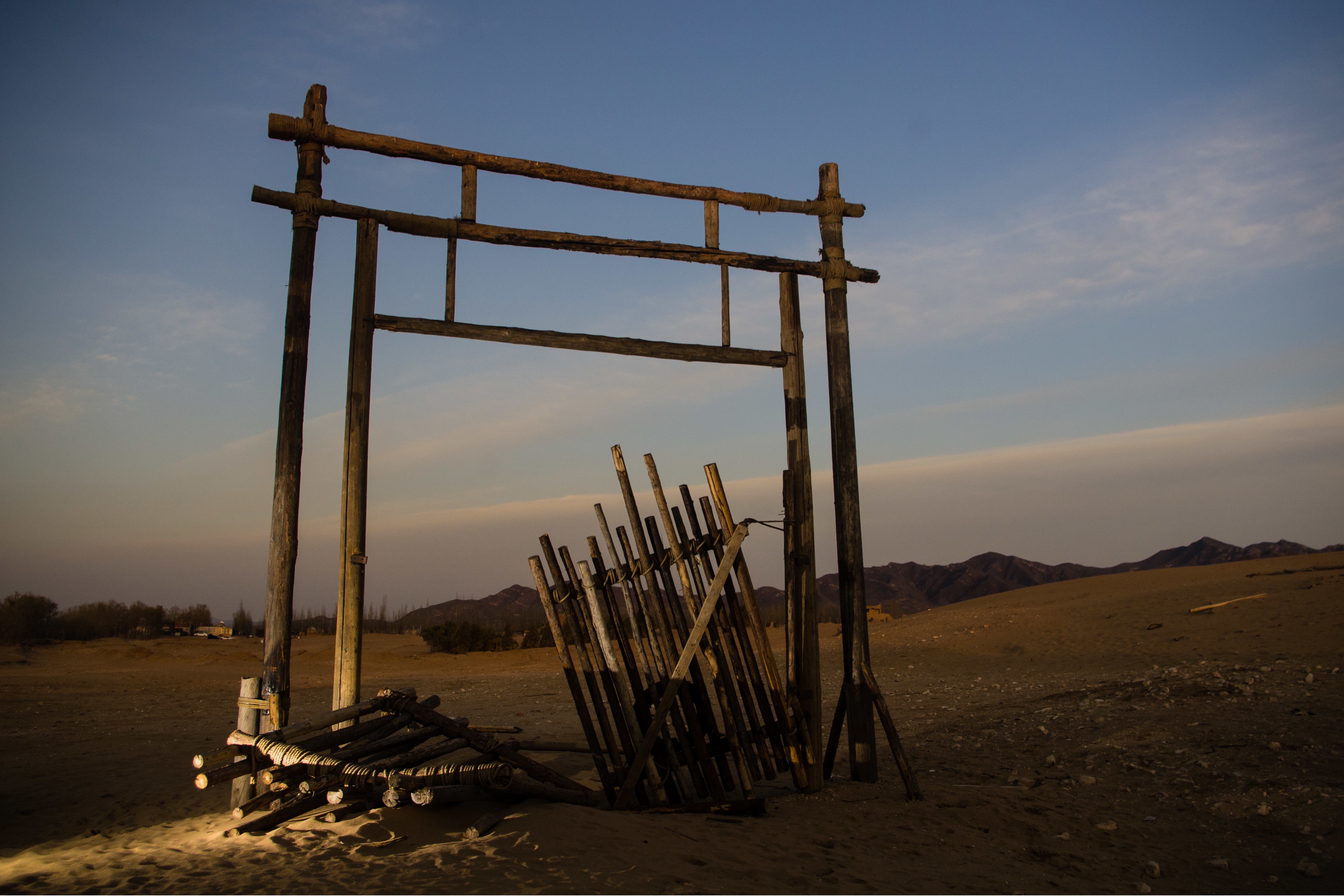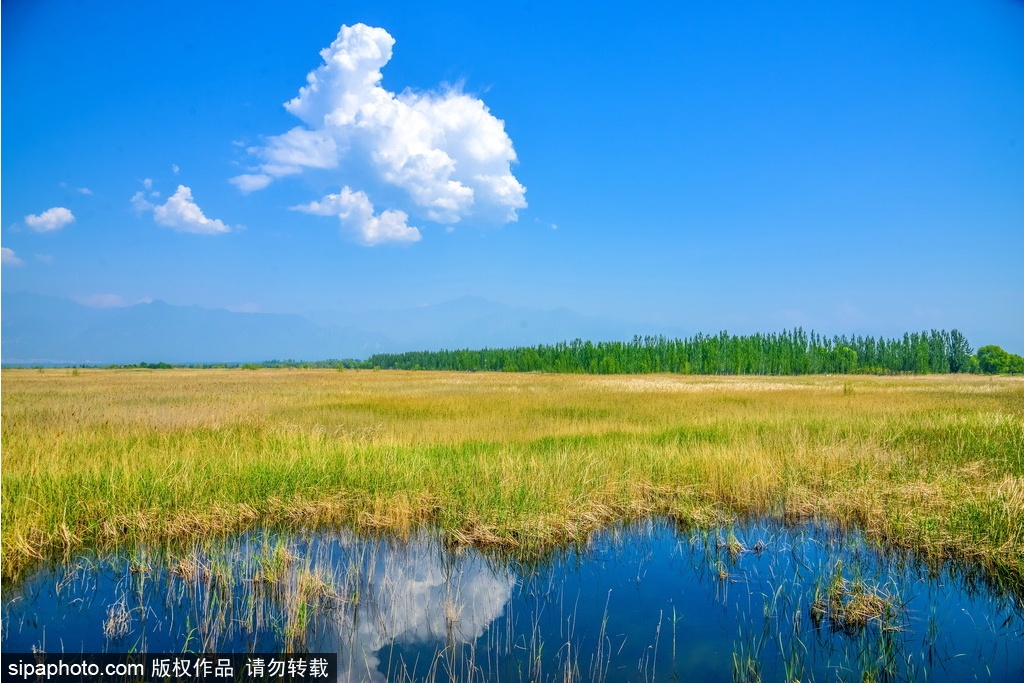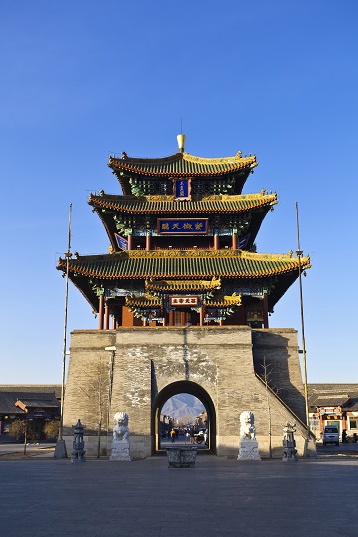
There's a unique place around Beijing distinguishing itself by being boundless and "deserted", without many souls to be seen. It is the Tianmo Desert, a desert near Beijing.
Located at the foot of the Yan Mountain to the south of Guanting Reservoir, and at the Longbao Mountain, Huailai County, Hebei Province, the Tianmo Desert is the desert nearest to Beijing, merely 70 kilometers from downtown Beijing and 25 kilometers from Badaling. It is still a mystery that how the desert formed. Historical tracks such as a huge mass of beacon towers, the Shanggu Relics and the ancient castles can be clearly seen. Winding its way through the mountains, it shines more than 10 li (5 km). The desert, neither despairing nor scary, covers an area of only 1300 mu (86.71 hectares), and it is deeply loved by tourists.
As a hidden danger of suburban Beijing, the Tianmo Desert was vast before. Many people worried that it may "invade" Beijing someday. Later, people began to bring the desert under control through planting trees, and therefore only two huge sand dragons were left today. Known by little, the broad desert, the setting sun and the dilapidated walls pictures such a magnificent landscape. The desert is threaded together with the Badaling Great Wall and the Kangxi Grassland, and forms a unique scenery line with the mountains, Gobi, deserts, lakes and ancient beacon towers.
The unique and charming natural sights of the Tianmo Desert makes it a best shooting location of scenery of Western China for both home and abroad. More than 300 films were shot here, including My Fair Princess, Armageddon, The Mummy: Tomb of the Dragon Empero, Romance of the Three Kingdoms, Journey to the West, The Country's Granary, The Flying Swords of Dragon Gate, etc. Served as both a tourist attraction and a shooting location, the small desert is divided into two parts, one acting as a desert tourist area, and the other a movie and television base.
Address: Longbao Mountain, southwest of Xiaonanxinbao Township, Huailai County, Zhangjiakou, Hebei
If you feel not satisfied enough after finishing your tour at the desert site, you can continue to take a trip at the following sites nearby.
Guanting Reservoir
Guanting Reservoir was once one of the most significant water sources supplying water for Beijing, and is a best site for fishing enthusiasts.
Yongding River Valley
Yongding River Valley, also known as the Guanting Valley or the Youzhou Valley, is famous for its section from the Dam of the Guanting Reservoir to the Yanhecheng Village. The marvelous cliffs stand steeply on either side of the valley. It’s a wonderful destination for self-driving tours.
Kangxi Grassland

Adjacent to the Guanting Lake on the east and the Haituo Mountain on the south, Kangxi Grassland is a rare summer resort in suburban Beijing. Here, you can enjoy riding horses, participate in the campfire party in the evening, and spend a leisure time on the weekend.
Wild Duck Lake Wetland Park

The Wild Duck Lake Wetland Park is the largest wetland natural reserve in Beijing, and is the only one for wetland birds. It is one of the favorite sites for photographers to "shoot" birds.
Gui Lake
You can’t believe that this ordinary river is famous for drift, which is an ideal option to avoid summer heat. Go with water while enjoy green scenery in breeze. What a wonderful thing in hot summer!.
Liugou Village
Liugou Village, whose city walls, city gates and temples are still maintained today, was a troop station in the Ming and Qing Dynasties. The village is said to appear like a flying phoenix when looked down from the mountain outside the village, and thus it is also called "the Phoenix City".
Yongning Ancient Town

Built in the Tang Dynasty (618 – 907 AD), the Yongning Ancient Town was called "the Hanjiang Town" in the ancient times. It was once guarded by Fan Lihua, a female general with outstanding military skills. Several relics of that time such as the drill ground, the stage of officers mustering, the horse ranch and the horse stables are still preserved outside the east and the north gates of the Yongning Town.



